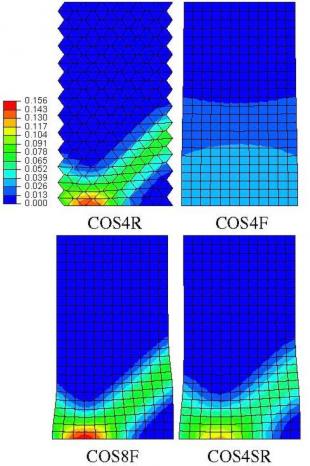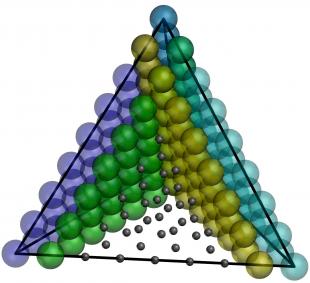The classical modelling framework of continuum mechanics gives great flexibility in the formulation of specific constitutive models and thus enables the description of a wide variety of material behaviours. There are however some general properties shared by all classical continua, which render them inherently unable to model specific phenomena. For example, the lack of intrinsic material length parameters does not allow classical continua to be used to model some phenomena related to the microstructure of the material, such as size effect or strain localisation. To model such phenomena, it is necessary to relax some restrictions of the classical continuum, thus obtaining generalised continua, such as the Cosserat (or micropolar), micromorphic, non-local or strain-gradient continua.
The overall research goal of the GECOMPL project is to enable wider adoption of generalised plasticity models in practical applications, by providing both the necessary theoretical basis and the appropriate numerical tools. The project has targeted the following four objectives:
- Study and compare existing models: introduce a detailed taxonomy of generalised continuum plasticity models to highlight similarities and differences of existing models and determine their applicability to specific types of mechanics problems.
- Provide appropriate micromechanical motivation: propose new generalised continuum plasticity constitutive models evaluated in view of their ability to describe discrete micromechanical material behaviours—and compare them to existing models, questioning the existing ad-hoc pairing of given constitutive models to specific materials.
- Develop efficient numerical implementations: develop novel highly-efficient numerical implementations of generalised plasticity models within the finite element method, both at the element level and at the integration-point level, to enable wider adoption of generalised models for solving real-world, three dimensional problems.
- Consider specific applications: model specific real-world problems using generalised plasticity to validate the appropriateness of the models proposed within the project and to showcase their applicability, thus encouraging their wider adoption.
The project has successfully addressed the first three objectives, with the fourth objective still being actively addressed. Results have already been presented at an invited seminar, an invited conference presentation, five conference presentations, and have been published in three journal papers and three conference papers. These publications have addressed both the core aspects of the project and specific mathematical and experimental aspects extending the initially foreseen research project. Further results, especially on the last two objectives, are scheduled for publication in the near future. A software library of Finite Element Method implementations of generalised continuum mechanics elements and plasticity models has been created and is currently being further developed.
Further Information:
For further information, please see:




